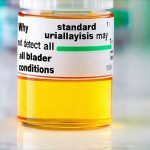Introduction
Understanding how our bodies function is often complex, requiring specialized tests to pinpoint issues when something isn’t quite right. When it comes to bladder health, several diagnostic tools are employed – collectively known as bladder function tests (or urodynamic testing) – to evaluate storage and emptying capabilities. These tests aren’t simply about measuring volume; they reveal a wealth of information about the nervous system’s control over the bladder and urethra, and how well these structures work together. However, many individuals take medications daily, sometimes multiple prescriptions, raising a crucial question: can these medications interfere with the accuracy of these tests? The answer isn’t always straightforward, as the potential for interaction varies widely depending on the medication itself, the specific test being performed, and even individual patient factors.
The goal of bladder function testing is to provide clinicians with objective data to support diagnosis and guide treatment plans. False positives or negatives caused by drug interactions can lead to misdiagnosis, inappropriate therapies, and ultimately, a negative impact on patient care. It’s therefore vital that healthcare providers are aware of potential medication interference, and patients are forthcoming about all medications they’re taking – including over-the-counter drugs, supplements, and herbal remedies. This article will explore the ways in which certain medications can affect bladder function tests, helping to illuminate this important aspect of urological assessment and emphasizing the need for careful consideration during testing protocols.
Medications Affecting Bladder Function Tests: A Broad Overview
A wide range of medication classes have the potential to influence the results of bladder function tests, making it essential to understand their specific mechanisms of action and how they might impact test outcomes. The most significant interactions generally stem from medications that directly affect neuromuscular control, bladder capacity, or urine flow. For instance, anticholinergics, commonly used for overactive bladder, can significantly alter the detrusor muscle’s ability to contract during filling studies, potentially masking underlying issues like detrusor instability. Conversely, alpha-adrenergic agonists, used in some cases of stress incontinence, may constrict the urethra and affect flow rates during voiding tests.
The impact isn’t always predictable or straightforward; some medications have subtle effects that are difficult to detect without careful interpretation, while others produce more dramatic changes. Importantly, it’s not just the medication itself but also dosage, duration of use, and individual patient sensitivity that play a role. A patient who has been on a high dose of an anticholinergic for several months will likely exhibit different effects during testing than someone taking a lower dose intermittently. Therefore, healthcare providers often recommend temporary discontinuation of certain medications before undergoing bladder function tests – when clinically appropriate and safe – to minimize interference.
The specific tests most susceptible to medication influence include cystometry (measuring bladder pressure-volume relationships), uroflowmetry (assessing urine flow rate), and postvoid residual measurement (determining how much urine remains in the bladder after voiding). Even seemingly unrelated medications, such as diuretics used for blood pressure control, can affect bladder volume and test results. This underscores the importance of a comprehensive medication review before any urodynamic evaluation is performed.
Common Medication Classes & Their Interactions
Several classes of medications are frequently associated with interference during bladder function testing. Anticholinergics (oxybutynin, tolterodine, solifenacin) are perhaps the most well-known culprits, as they reduce detrusor muscle contractility and can lead to falsely elevated cystometric capacity or suppressed involuntary contractions. This could mask a genuine overactive bladder diagnosis. Beta-adrenergic agonists (albuterol, terbutaline), used for asthma and COPD, can relax the urethral sphincter and potentially lower urodynamic pressures, impacting stress incontinence assessments.
Beyond these, medications affecting neurological function can also play a role. Tricyclic antidepressants and certain antipsychotics may influence bladder control through their effects on neurotransmitters, altering both storage and emptying phases of the micturition cycle. Similarly, opioids are known to decrease detrusor muscle contractility and increase urethral resistance, potentially leading to urinary retention and impacting voiding studies. It’s worth noting that even some muscle relaxants can contribute to altered bladder function due to their impact on neuromuscular control.
Considerations for Pre-Test Medication Management
Given the potential for medication interference, a structured approach to pre-test management is crucial. The first step involves a thorough medication history, including prescription drugs, over-the-counter medications, vitamins, and herbal supplements. Patients should be specifically asked about any medications they’ve recently started or stopped. Based on this information, healthcare providers will determine which medications might need to be temporarily discontinued before testing.
- Discontinuation Protocol: If medication discontinuation is deemed necessary, it should be done in a safe and gradual manner, under the guidance of the prescribing physician. Abruptly stopping certain medications can lead to withdrawal symptoms or exacerbate underlying conditions.
- Timing of Discontinuation: The appropriate timeframe for discontinuation varies depending on the medication’s half-life and its potential impact on bladder function. Anticholinergics, for example, may need to be stopped several days before testing to minimize their effects.
- Patient Education: It is essential that patients understand why medication adjustments are being made and are instructed not to alter any other medications without consulting their doctor. Clear communication minimizes confusion and ensures patient safety.
Impact on Specific Tests & Interpretation
The influence of medications isn’t uniform across all bladder function tests. Uroflowmetry, which measures urine flow rate, can be affected by alpha-adrenergic agonists (reducing flow) and beta-adrenergic antagonists (potentially increasing flow). This means that interpreting uroflowmetry results requires careful consideration of the patient’s medication list. Cystometry, assessing bladder capacity and pressure changes, is particularly vulnerable to anticholinergic effects, leading to inaccurate assessments of detrusor overactivity or underactivity.
Postvoid residual measurement, which determines the amount of urine remaining in the bladder after voiding, can be influenced by medications that affect bladder emptying, such as opioids or alpha-adrenergic agonists. A falsely elevated postvoid residual could suggest incomplete bladder emptying when it isn’t actually present. In all cases, healthcare providers must consider the possibility of medication interference when interpreting test results and making clinical decisions. It’s often necessary to repeat testing after medication adjustments or to correlate urodynamic findings with the patient’s symptoms and other diagnostic information. Accurate interpretation requires a holistic approach, combining objective data with subjective reports from the patient.





















